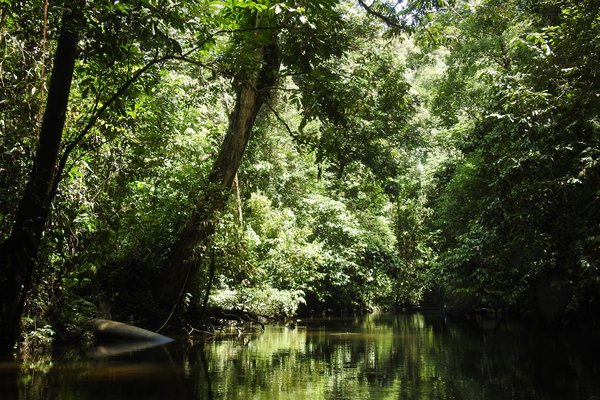Malaysia
Gunung Mulu
Gunung Mulu National Park is renowned for its natural beauty, biodiversity and its karst features that hold some of the largest cave systems in the world.
The Sarawak Chamber is one of the largest in the world, the Deer Cave is the largest cave passage and the Clearwater Cave System is the longest mapped cave in Asia. Deer Cave also has one of the largest colonies in the world of free-tailed bats. All caves are rich in specific cave fauna and feature fine examples of speleothems and other karst features. The park is also rich in flora species with a high percentage in endemism.
Community Perspective: located in a remote part of Malaysian Sarawak and realistically only accessible by plane, this outstandingly managed park (the visitor experience has improved a lot since 2010) warrants a visit of at least 3 days. You can take part in a variety of guided (cave) tours and watch the spectacular Exodus of the Bats. Be aware that afternoons often are rained out.
Site Info
Official Information
- Full Name
- Gunung Mulu National Park (ID: 1013)
- Country
- Malaysia
- Status
-
Inscribed 2000
Site history
History of Gunung Mulu
- 2000: Inscribed
- Inscribed
- Type
- Natural
- Criteria
- vii
- viii
- ix
- x
Links
- UNESCO
- whc.unesco.org
- Official
-
- mulupark.com — Guning Mulu Park
- Related
-
- en.wikipedia.org — Wiki on Gunung Mulu
All Links
UNESCO.org
- whc.unesco.org — whc.unesco.org/
Official Website
- mulupark.com — Guning Mulu Park
Related Resources
- en.wikipedia.org — Wiki on Gunung Mulu
News Article
- Feb. 23, 2023 scoop.co.nz — Borneo Natives Fear Ousting Of Leader Over UNESCO World Heritage Row
- July 13, 2019 thestar.com.my — Mulu cave flood: Dutch tourist dead, guide missing, eight others safe
- Oct. 12, 2014 theborneopost.com — Mulu Park to be gazetted as smoking-free area by 2017
- Aug. 1, 2011 bernama.com — Rare Stromatolites Discovered At Mulu's Deer Cave
- July 24, 2008 bernama.com.my — Tutoh Dam Can Affect Mulu National Park's Heritage Site Status
- April 21, 2008 thestar.com.my — The Malaysian Government has decided against constructing a road to link to the WHS, keeping it only accessible by air from Miri or by river.
Community Information
- Community Category
- Natural landscape: Karst landscapes and caves
Travel Information
Recent Connections
-
Featured in the Go Jetters
Series 2: Episode 16: Gua Rusa -
Untranslated Toponyms
"Gunung" = "Mountain" in Malay speaking… -
Named after a Mountain
Named after Mount Mulu, the second high…
Connections of Gunung Mulu
- Geography
-
-
Hot Springs
Terikan River hot springs -
Canyons
Melinau Gorge Canyon -
On National Border
On border with Brunei
-
- Trivia
-
-
Tourist Treks
Mulu summit trail
-
- Ecology
-
-
Notable for Bats
Deer Cave alone has one of the largest colonies in the world of free tailed bats, ... at over 3 million. (OUV) -
Dripstone
Lang Cave, Clear Water Cave and Wind Cave -
Rainforests
"primarily lowland rainforest (40% of the area) and montane rainforest (20% of the area)." (AB ev) -
Significant Karst Features
Surface features include giant collapse dolines and spectacular razor-sharp pinnacle karst (AB ev) -
Strepsirrhini
slow loris -
Underground river
Clear Water Cave -
Living Stromatolites
"Stromatolites ...are also common at all the cave entrances" (Nom file 6.3.4) -
Carnivorous plants
various species of Nepenthes
-
- World Heritage Process
- Human Activity
-
-
Edible bird's nest collection
"Due to the value of their nests, there is great pressure on the populations of black-nest swiftlets (Collocalia maximus) and white-nest swiftlets (Collocalia fuciphagus) in the Malaysian provinces of Sarawak and Sabah. The problems are particularly acute at Gunung Mulu National Park, in spite of a complete ban on collection there" (see link) -
Canopy Walkways
"The Mulu canopy walk is a 420 metre walkway, suspended 25 metres above the forest floor and still one of the longest tree based canopy walks in the world."See mulupark.com
-
Natural sites with indigenous human population
Penan Nomadic Tribes -
Traditional Hunting
"Local Penans retain traditional hunting rights within the park." (AB ev)
-
- WHS on Other Lists
-
-
Located in a TCC Territory
Sarawak -
World Heritage Forest Programme
-
Biodiversity hotspot
Sundaland -
ASEAN Heritage Parks
-
Centres of Plant Diversity
SEA18 Limestone Flora of Borneo, Sarawak & Sabah - "The property supports one of the richest assemblages of flora to be found in any area of comparable size in the world. It is botanically-rich in species and high in endemism, including one of the richest sites in the world for palm species" -
Alliance for Zero Extinction
Pelophryne api
-
- Timeline
-
-
Pliocene
Major uplift that occurred during the late Pliocene to Pleistocene is well represented in the 295 km of explored caves as a series of major cave levels (crit viii)
-
- Visiting conditions
-
-
Foreigner prices
Foreign Adult RM 30, Malaysian Adult RM 15
-
- WHS Names
-
-
Untranslated Toponyms
"Gunung" = "Mountain" in Malay speaking countries -
Named after a Mountain
Named after Mount Mulu, the second highest mountain in Sarawak. (wiki)
-
- Literature & Film
-
-
Featured in the Go Jetters
Series 2: Episode 16: Gua Rusa
-
News
- scoop.co.nz 02/23/2023
- Borneo Natives Fear Ousting Of Lea…
- thestar.com.my 07/13/2019
- Mulu cave flood: Dutch tourist dea…
- theborneopost.com 10/12/2014
- Mulu Park to be gazetted as smokin…
Recent Visitors
Visitors of Gunung Mulu
- Alex Goh
- Atila Ege
- Bernard Joseph Esposo Guerrero
- Bin
- Boj
- Bram de Bruin
- c82wc1
- Carlo Sarion
- Chunsian01
- Claire Bradshaw
- cutecid
- Dimitar Krastev
- Elf21
- Els Slots
- Errol Neo
- Eva Kisgyorgy
- Fan Yibo
- Frédéric M
- Frederik Dawson
- Gary Arndt
- Grzegorz Andruszkiewicz
- Iain Jackson
- Jana and Matt
- Jarek Pokrzywnicki
- Jeanne OGrady
- Joel on the Road
- jxrocky
- Kjlauer
- ko9757
- Kurt Lauer
- Lars Bogstad
- Lithobates
- Lukasz Palczewski
- Luke LOU
- Marton Kemeny
- Michael Ayers
- MMM
- Morodhi
- Nafis N
- Naim Y
- Nick Kuzmyak
- Nihal Ege
- Philipp Leu
- Pieter Dijkshoorn
- Randi Thomsen
- ReallyDeepThoughts
- Rob Wilson
- Roman Bruehwiler
- Shandos Cleaver
- Stanislaw Warwas
- Svein Elias
- Szucs Tamas
- Thomas Buechler
- Thomas van der Walt
- triath
- Vanessa Buechler
- Wieland
- Wojciech Fedoruk
- Zoë Sheng
Community Reviews
Show full reviews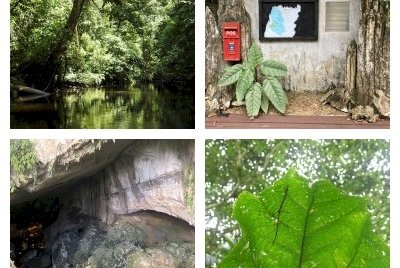
Gunung Mulu National Park scores in superlatives. Mulu has the Second Biggest Cave Chamber in the world (Sarawak Chamber), the Largest Cave Passage (Deer Cave), and one of the Largest interconnected cave systems (Clearwater Cave System). It has among the highest number of palm tree species anywhere ánd even the longest canopy walkway. It has been inscribed as a WHS on all 4 natural criteria. Even on our website, it ranks 30th of all 1157 WHS, with an average score of 4.5.
Despite knowing all these accolades, it blows you away on arrival. Its rainforest setting is stunning, it is much prettier than pictures can convey. I found it especially hard to take good photos here, I took over 500 and kept only 90 or so. I tried all kinds of settings, both on my large zoom camera and my phone, to no avail (others had more success with their latest generation high-end iPhones). The rainforest and the cave interiors are very dark, and pouring rain doesn’t help either. Animals are either very skittish or tiny. Trees, cave entrances and stick insects are the best bets!
The park is very well-managed from a visitor's perspective and accessible to all. One of the guides joked that you can see the Sarawak Chamber for only 35 ringgit (7 USD), while Son Doong in Vietnam (which recently surpassed it as the Biggest Cave Chamber) takes a 5-day expedition costing 3000 USD. I took 3 guided tours in Mulu, the 4th, …
Keep reading 0 comments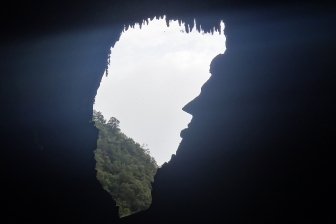
Mulu National Park has to be my favorite park I have stayed in, not only because it offers so much nature, variety of activities, amazing professional staff, but also because the limit of guests that can visit the park makes this a safe and enjoyable experience. Plus if you aren't into homestays or the only official guest house from the park offices (it was fully booked) there is a 5 star Marriott a few minutes drive off that boasts luxury accommodations without breaking the bank. They offered a shuttle to and from the park but you may have to wait a little for it to pick you up. The park offices has a nice cafe with affordable food if you don't want to eat at the Marriott.
Getting here is also easier than expected. Coming from Brunei I took the bus to Miri, had lunch, took a taxi (unfortunately costs more than I think it should, and whereas it is a little far I tried to carpool with others and the taxi drivers won't hear any of that), then fly directly to the park. I heard the flights may easily get canceled due to the weather, mainly fog, so I assume some people could have a nightmare experience getting stranded in Miri where there isn't really anything to do. The views from the plane are beautiful.
I reached the park in the afternoon and immediately signed up for the night tour. Good idea too because they only do …
Keep reading 0 comments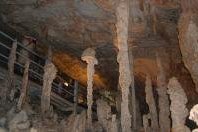
There might be no other "mega" caves system in the world that can compare to the grandness and the diversity that Gunung Mulu can offer. Surprisingly, my 3-day visit there turned out to be just too short.
I arrived in Mulu through a plane from Kota Kinabalu, passing through Miri. Prior to the visit, I had to arrange everything from accommodation to tours as there are times when everything is just full. I managed to do the walking trails, visit the indigenous Penan settlements, see the four show caves, the canopy walk, the waterfalls, and the tree top tower. The real highlight, of course, are the mega caves.
I have to agree to the previous reviews commending - despite the remoteness - the management of the park. Tours are only handled by certified heritage site guides, information posters everywhere, trails are all signposted properly, and the sites are well and strictly kept --- all these efforts are very sensitive to nature. After visiting three natural WH Sites (Kinabalu Park and Puerto Princesa Subterranean River) and several other national parks this year, I probably have to admit that Gunung Mulu is one of the most well-managed sites I've seen.
I enjoyed a lot the visits to the Winds Cave and Langs Cave - the two being the smallest of the four show caves) The Winds Cave's King's Chamber will probably hold a special place to my heart indefinitely, together with the small but really highly decorative Langs Cave. Aside from the …
Keep reading 0 comments
Malaysian Sarawak seemed to be the last frontier of the world with the images of unexplored jungles, unique animals and fascinating tribal cultures, on July 2010, I had a chance to visit Sarawak to find out that my imagination toward this land was not exactly I dreamed but with full of surprise and sometime beyond my expectation. The first view of Sarawak on the plane was endless palm oil plantation, quite amazing sight but truly a tragedy of environment that all lowland jungle had been destroyed. The leftover jungles were on the high mountain and one of the survivors was my destination of this trip, Gunung Mulu.
Visiting Gunung Mulu was expensive and bureaucratic over killed from pricy airline and limited park entry permit. Visitors were almost impossible to visit the park without park ranger and had to go in group. However Gunung Mulu was really a fascinating place with many incredible things to see. The star of Gunung Mulu was the four show caves, Wind Cave, Clearwater Cave, Lang Cave and Deer Cave. These four caves were different and had their own characteristic. Wind Cave was full of beautiful stalactites and stalagmite especially in the King Chamber. Clearwater was jaw dropping with huge underground river caverns, one of the longest cave in the world beautiful pond in front of the cave and uniquely one leaf plant that only found in Gunung Mulu. Lang Cave was the smallest but with many fantasy stalactites. The last and my favorite was Deer …
Keep reading 0 comments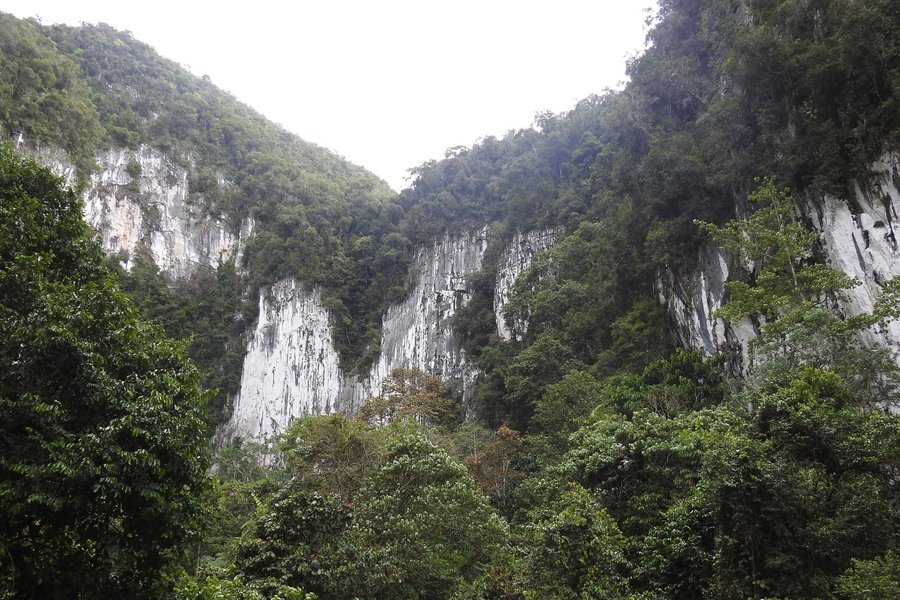
The most efficient way to visit Gunung Mulu is to fly in for an over night stay from Kota Kinabalu. They have daily flights into Mulu via Miri and the plane lands at about 3.30pm. You can do the Deer Cave right away and watch the bats come out in the evening. It will take an hour walking through the forest on raised plank walks. The Clearwater cave can be visited the next morning via a 30min boat ride on the Melinau River. This is really pleasant and peaceful ride.
After lunch, there is a flight back to Kota Kinabalu at about 2pm. Well worth the effort but bring rain coats.
Keep reading 0 comments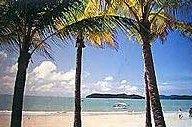
Gunung Mulu National Park
Within the boundaries of Gunung Mulu National Park in Sarawak is one of the most extensive and spectacular limestone cave systems on earth, as well as the second highest mountain peak in the state. Gunung also enjoys unusually high rainfall. As a result it bursts with life, and many new plant and animal species have been discovered here. Officially constituted in 1974 and opened to the public in 1985, Gunung Mulu National Park encompasses only 544 sq. km in North Sarawak, Borneo. Gunung Mulu's Caves are extraordinary. Mulu's Sarawak Chamber is the largest natural chamber in the world, and Deer Cave is the largest cave passage known to man. It has two huge entrances at either end of the mountain it penetrates. Most of Deer Cave is illuminated, one can see 600-foot waterfalls pouring from the roof following a rain storm. Perhaps the most popular attraction of this cavern, however, is the daily exodus of its colony of nearly a million bats. Every evening the bats stream from the cave to spend the night dining on Gunung's rich insect population.
Clearwater Cave is the longest cave system in Southeast Asia. Although little of it is open to park visitors without special permission, over a hundred kilometers of passages have been discovered so far. Not all of Mulu's limestone features are contained in caves. Gunung API, a 1,750 meter high mountain of limestone, lies directly beside Sarawak's second highest mountain peak, Gunung Mulu (2,376 meters). Both mountains …
Keep reading 0 comments
